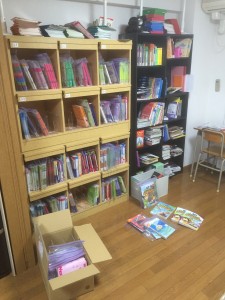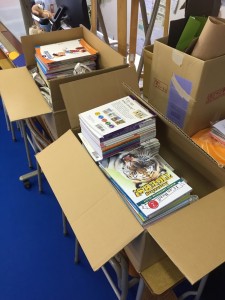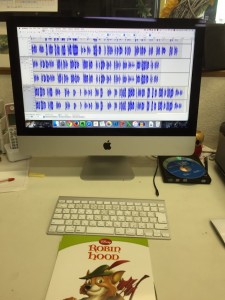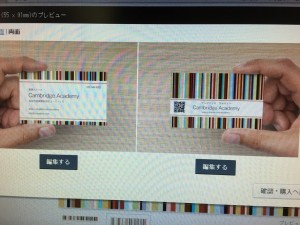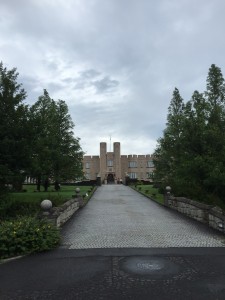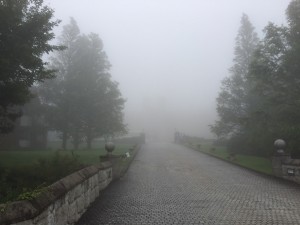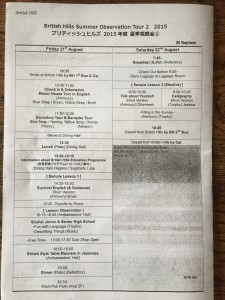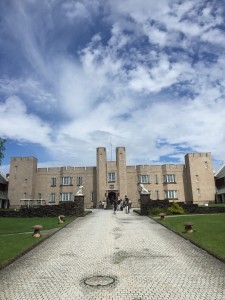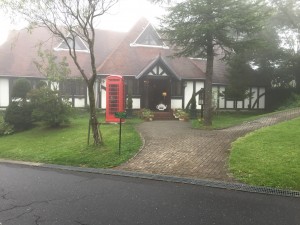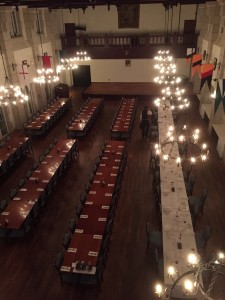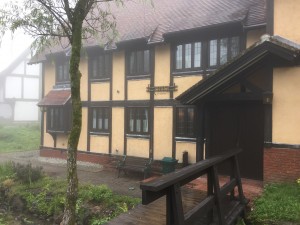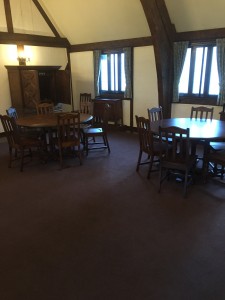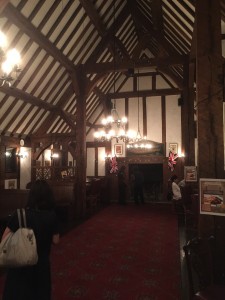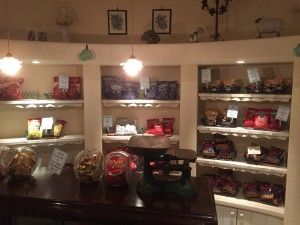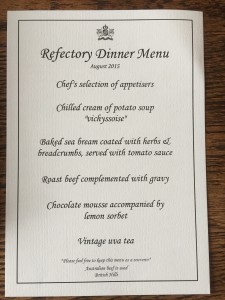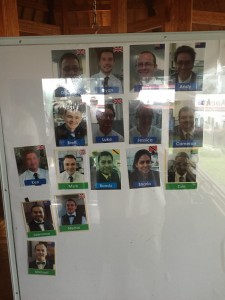business curriculum extensive listening extensive reading high school junior high school school management self-study
by sendaiben
11 comments
Cambridge Academy (six months in)
Extensive Reading for Secondary Students Part 2
Well, we’ve been running the Cambridge Academy for about six months now.
Academy classroom
Cambridge Academy (see previous write-up here): so far so good. We’ve run into some problems and changed course a couple of times, but the program is shaping up and it’s time for a big recruitment push. In this post I will talk about some hiccups we encountered, solutions, and future plans.
Problems so far
1. We still don’t have enough books
2. Some books don’t have commercially available audio
3. We don’t have a coherent program beyond the beginner level (over YL0.9)
4. Some students (10%>) are not performing well
5. Writing activities are not a good fit for an extensive reading class
Solutions
1. We continue to buy books and process existing ones (label and put into database and reading checklists) so that students can use them. We’ve probably doubled our existing readers since April and will probably continue doing this for the foreseeable future. Practice is making better, and our processing is getting much quicker now.
Processing new books
Processing new books involves the following steps:
- open box, remove plastic wrapping etc.
- find YL/word count information
- label books with SEG labels
- input book information into our reader database
- copy CDs and put away the masters
- put books and CDs into ziplock bag sets
- add book/set information to reading checklists
- put books on the shelves
The two major problems are if books don’t have YL/word count information, and if books don’t have CDs/audio. Right now we guesstimate YL and count words if the books are short enough. For longer books we try to find the word counts online. This site is great to find US-published series.
2. For books with no commercial audio available, we have been making our own by reading the books out loud into an iMac using Audacity to produce mp3 files that we then burn to CDs using iTunes. So far this is working very well, but it takes quite a long time and we still have over 500 books to make CDs for!
Recording audio
3. None of our students have gone beyond YL1.0 yet, but a couple of them will reach it soon. Before that happens we need to make sure we have enough books for them to read. Another problem is what to do about audio. I suspect that by the time students go over YL1.0 audio will be less important, but I am not 100% sure.
The other question is whether to continue grouping books into sets or to move to having individual books. If individual books, what will the checklists look like? I suspect all of this will get worked out over the next six months or so.
4. We have two problems with some of our students. The first is that a small number of students (two or three) seem to be exaggerating the amount they read or reading in a very perfunctory way (just looking at the pictures). I’m not sure how much of a problem this is, as they may well still be getting some benefit from the audio input. If it is a problem, I don’t really know what to do about it. I have tried talking to them, asking them about the content of books, and had them read the books out loud to me, but I am still not happy about the situation. Work in progress.
The other problem is potentially more serious. So far only one student seems to have run into it. Basically the student seems to have hit a wall around YL0.3, and is reporting that they cannot understand anything in the books at that level. I have tried talking to the student and explaining that it’s not necessary to understand everything but rather important to try and catch familiar words and think about the meaning, but I am not sure how helpful that was or how to solve this if it comes up with other students. Another work in progress.
5. Our initial model bundled extensive reading and writing practice (through weekly writing assignments) into one class, with speaking activities in the other. However, this model has several important drawbacks and we’ll be changing it in the future. Our ER classes have up to 12 students in them, so checking each student’s writing in 55 minutes is really hard and quite stressful for the teacher. Checking writing assignments in the ER class also means that our teaching assistants cannot take the class (they would be able to if it was just ER). Finally, having writing assignments in the ER class makes the class more stressful and less fun. Students are worried about finishing their writing instead of just relaxing and enjoying the reading class.
From next year we will include the writing assignments in the communication class (output), while the ER class will focus on reading and listening to the accompanying CDs.
Future plans
We have a few plans not mentioned above. The first and most important is that now that the program is getting into a half-decent shape, it’s time to try to expand it and recruit more students. So far all our students joined from within the school. Only half a dozen or so joined the school once the Academy was running, and we haven’t been actively advertising the course.
Business cards for advertising
From this week we will start actively trying to recruit new students, through our new Academy webpage and various advertising campaigns. Our goal is to have 100 students in the Academy by December 15th this year.
Planning the new website
Our website is getting a bit dated so we plan to get a new one made in November this year.
We are also going to explore whether the ER class is a standalone product. At first we went off the SEG model, which pairs an ER class with a communication class, but my friend DE suggested that the ER class might be our main product, with the communication class as an optional extra. This would be much easier to provide logistically, so I am excited to see if it is true over the next couple of months.
Another thing that we need to work on is making the ER classroom more comfortable. Right now it is set up with school-style desks and chairs, but we are planning to make more of a cafe-style with more comfortable chairs and funkier design/lighting/etc. Ideally it should be a welcoming space that students want to spend time in, and prospective students are attracted to. Work in progress, but I hope to post some pictures in the next update.
We need to find another couple of teaching assistants so we can train them before expanding the number of classes. We’re looking for 2nd-year university students at the moment.
Eventually we are hoping to open new branches in other parts of the city. I think that will be an option once we have 200 students at the original location. Another work in progress!
Any questions or advice? Please comment below.
business language courses school management study trips summer camp
by sendaiben
10 comments
British Hills in Fukushima
Some corner of a foreign field…
I finally had the chance to visit British Hills in Fukushima last weekend. If you are not aware of British Hills, it’s basically an ‘English village’ run by the Kanda Foreign Languages Group that doubles as a hotel and language training centre. They are located in the mountains of Fukushima, 25 minutes drive from the nearest convenience store!
The resort was running a special summer tour for teachers (basically a PR exercise) and I was able to join it alongside 28 other teachers. We spent about 24 hours there, arriving on Friday morning and leaving on Saturday morning. It was extremely interesting and worth doing if you are thinking about taking students there. The study visit costs about 12,000 yen, which basically covers the food and transport costs. Accommodation and lessons would be much more if you were paying (more on prices later).
Weirdly, we had British weather the whole time: misty and cool. The resort is in the mountains at 1000 metres altitude, so it’s much cooler than the surrounding area in summer. Apparently they get up to 2 metres of snow in the winter though!
The schedule for the visit
The event was extremely well run, and we had a number of the sales and management staff (including the President) come up from Tokyo to join in. To be honest, it was an extremely full schedule, and we felt a bit rushed. There was no time to walk around or relax on the tour.
The facilities
The buildings and grounds at British Hills are probably the best thing about the place. The whole complex is beautiful and is very ‘English’ in a stereotypical way. Lots of lawns and Edwardian houses. It definitely fulfills its role as ‘an English village in Japan’.
The main building housing classrooms, the Refectory (dining hall), swimming pool, gym, etc.
The tea shop, which we didn’t have time to sit down in but looked good.
The dining hall, modeled on an Oxbridge college Hall.
One of the student dorm buildings.
A common room in one of the student dorms.
The pub.
The tuck shop, which I was initially excited about, and then very disappointed with. None of the snacks are British!
Lessons
During the tour we were able to attend or watch the following lessons:
- Introductory lesson/orientation (English)
- Tour of main building (English)
- Tour of dormitories and main student building (Armory) (Japanese)
- Information about B.H. study programs (Japanese)
- Survival English (English)
- Lesson Observations (2) (English)
- British Table Manners (Japanese)
- Calligraphy (English)
My impression of what we saw is that the Japanese orientations (PR pitches) were pretty good, the content lessons in English and Japanese were very good, and the language lessons in English were pretty poor. The lessons I saw (which I presume are the best lessons) struck me as something a first-year ALT might do. Lots of running but most students are not doing anything for most of the time. I was expecting much more and this was the most disappointing aspect of the visit, particularly as students pay 3000 each for these lessons, so with a full class of 20 you are paying 60,000 yen to have students do criss-cross for 90 minutes.
The calligraphy lesson we took was very good, as was the lecture on table manners. I imagine the cooking lessons would also be fun.
Based on what I saw, the language lessons are not worth doing, but the culture and craft ones might be.
Food
We had three meals on site.
Lunch was fine. It was filling, hearty, inoffensive, and kind of British.
Dinner was excellent.
Breakfast was fine, buffet-style like a hotel. Not great quality but filling.
Staff
The staff were without exception all great. Friendly and welcoming, there was a really nice atmosphere throughout the site.
Some of the teaching staff.
Apparently there are twenty-three foreign teaching staff, and twenty other foreign staff on site. As the resort is open all year round, they presumably are working shifts and taking holidays. My impression is that there were not as many foreign staff as I was expecting. To be honest, they were kind of thin on the ground. British Hills, at least while I was there, did not deliver the kind of English immersion I was expecting.
The resort did have Japanese staff that were doing their best to interact with visitors in English, but the few interactions I witnessed seemed a bit forced and the resort staff’s English was not perfect, even when dealing with junior high school students. Of course, this would not be important outside of the context of an English immersion experience.
Overall though, the friendliness and warm atmosphere was a credit to the resort.
Prices and Location
Now this is the killer. The resort is located about 40 minutes drive from Shin-Shirakawa shinkansen station. The resort operates shuttles, but I’m not sure if you have to pay for them. From Sendai, it’s basically two hours door-to-door by shinkansen, or three and a half by coach.
The prices, both to stay and for lessons, seem a bit high to me. The resort has a high season (July to September) and a low season (the rest of the year). Prices are slightly lower in the low season. There are also different prices for schools, universities, individuals, and groups. It’s all very confusing.
My impression is that it will cost 15,000+ yen to stay and 3000-5000 yen per class per student. They seem to be empty in the winter, so it may be possible to negotiate a better deal then.
Overall
I was both impressed and unimpressed with British Hills. The facilities are amazing, the staff are really friendly, it’s inconvenient to get to, the prices are a bit too high for accommodation and ridiculous for lessons, and the language lesson quality is poor.
Overall I would not write it off, but you would have to be very careful when designing your program to make it worthwhile. I get the feeling their standard packages would be a poor value.
It was an interesting couple of days though. Thank you British Hills for the invitation and the hospitality, and hopefully I’ll have a chance to take some students there at some point.
Has anyone else visited British Hills? How was it?
Freestyle warmups for children’s classes
Recently I have been doing these kinds of freestyle warmups with children’s classes. They are easy, fun, interactive, and break up a regular class well.
Start by introducing the language on the board. Then practice orally. Finally have students write their personalized version in their notebooks. The whole thing takes about ten minutes.
Global Teacher Prize
I was lucky enough to be able to attend the Global Education and Skills Forum in March this year, where the first Global Teacher Prize was awarded.
One thing that struck me at the time is that of the 50 finalists, not one was from Japan.
Japan has a huge number of passionate educators who deserve recognition. I would love to see some of them in the finalists for the 2016 Global Teacher Prize.
Teachers of children between 5 and 18 years are eligible, and the judges are looking for:
- Recognition of a teacher’s achievements in the classroom and beyond from pupils, colleagues, head-teachers or members of the wider community.
- Encouraging others to join the teaching profession. Contributing to public debates on the teaching profession, whether through writing articles, blogs, media participation, social media campaigns, events or conferences.
- Employing innovative and effective instructional practices and achieving demonstrable student learning outcomes in the classroom.
- Achieving demonstrable student learning outcomes in the classroom.
- Achievements in the community beyond the classroom that provide unique and distinguished models of excellence for the teaching profession and others.
- Ensuring children receive a values-based education that prepares them to be global citizens in a world where they will encounter people from many different religions, cultures and nationalities.
If you know a great teacher, why not nominate them for the ‘Nobel Prize of teaching’ here?
Sponsoring a Teacher Visa in Japan Part 2
Wait, that was it?
As Trevor rightly pointed out in Part 1, applying for a visa as an English teacher doesn’t really involve sponsorship, but I wanted to keep the title the same for the second post. More accurately we could describe the process as ‘supplying the necessary documents to prove a viable job offer to a teacher applying for a Specialist in Humanities visa’.
Anyway, a few weeks ago I went to the immigration office with our prospective new teacher (not necessary, we just wanted someone there from the school in case there were any problems with the paperwork). We took the following paperwork with us:
From the school:
- copy of the school’s tax return (as it is a personal business)
- copy of the pamphlet
- explanation of the school
- copy of the teacher’s contract
- <we missed something>
From the teacher:
- passport
- zairyu card
- photos
- revenue stamps
- application form
- resume
We went straight to reception and talked to a very pleasant lady who checked our documents and gave us a number. After about half an hour a case officer called us up. She was unsmiling and serious until she looked at our application, then she relaxed and started smiling. I took that as a good sign.
First of all she said we were applying very early (six weeks before our new teacher’s current visa runs out) to which we replied of course that we wanted to make sure we could deal with any problems in good time.
It turns out we had forgotten to fill in the 3rd-4th pages of the application form (the school has to fill this in and stamp it), and the case officer also wanted a copy of our teacher’s current employment certificate (jirei). We could send both documents by post within the following couple of weeks. Then she said we could go.
And that was it. Very painless, even with us having messed up the paperwork.
Last week our teacher emailed me saying the notification postcard had arrived, and the visa could be collected on the first working day of August. A huge relief and a big milestone for our school: first teacher visa enabled!
Please post any questions or anecdotes in the comments below.
